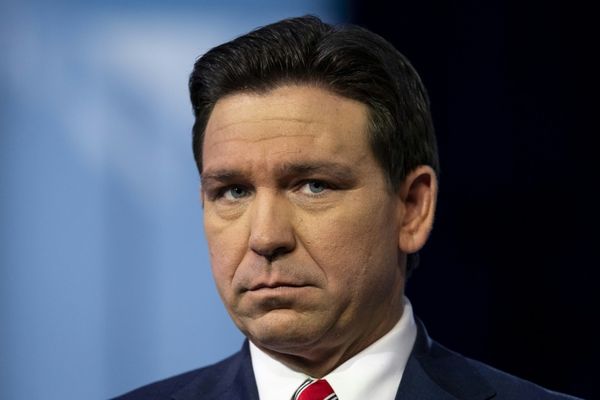NEW YORK — It was something so normal: Just two former teammates playing catch.
The ball hitting the glove, the grass under their feet and the adoration of the crowd.
Two members of the 1969 World Series-winning Mets team playing catch on the front lawn of a home on Long Island. Fans, neighbors and everyone in between wanted to come outside and see Bud Harrelson and Art Shamsky having a catch. They honked their horns, they clapped and they cheered.
“I brought my glove with me just thinking maybe there was a chance,” Shamsky told the New York Daily News. “It was just really interesting because his motor skills hadn’t deteriorated at all. He was able to catch and throw the ball.”
It was one of the last “normal” moments Shamsky would have with his friend. The normalcy had already faded, even if his throwing arm hadn’t. Harrelson was diagnosed with Alzheimer’s disease in 2016. The decline wasn’t overnight but it was swift. A beloved former Mets shortstop, coach and manager now resides in a facility on Long Island where he can have round-the-clock companion care. He has declined to the point where he doesn’t speak, but the 78-year-old still reacts happily to seeing his family when they visit.
He recognized Shamsky that day out on the lawn in front of his house on Long Island in 2019.
“We played catch on his lawn for about 15-20 minutes. It was really amazing.” Shamsky said. “It was a very special day. I was glad that we were able to do that just because it made me feel better. But I was hoping he felt better doing it.”
It’s a strange dichotomy: A disease took the memory from someone who provided so many people with so many of their favorite memories.
Harrelson’s family has made it their mission to not only keep the memories of him alive but also to help other families who are helping loved ones with Alzheimer’s. His ex-wife Kim Battaglia has taken the reins because it’s what Harrelson wanted — he wanted to aid others fighting Alzheimer’s when he no longer could.
“He’s the happiest when helping others,” Battaglia said.
Battaglia sits on the board of directors of the Long Island chapter of the Alzheimer’s Association in Harrelson’s honor. She serves as a member of the group’s advocacy committee and the walk committee. She gives talks to schools and other groups and helps raise funds for research, resources and awareness.
“She’s been a miracle worker,” Shamsky said. “I can’t commend her enough for what she’s done over these years in watching out for Buddy. It’s just remarkable that she’s taken the time and that she has devoted a lot of her life to doing that.”
When he was still able to make his own decisions, Harrelson became the honorary chair of the annual walk.
“He’s the quintessential caregiver,” Battaglia said. “Which wasn’t a term we were ever familiar with before he had Alzheimer’s.”
Battaglia and Harrelson divorced years ago but they remained close friends. Harrelson had two kids with his first wife, Yvonne, and three with Battaglia. The six of them formed a team to be able to care for Harrelson. They formed a group chat to keep everyone up to date on his care. They educated themselves on how to care for someone with Alzheimer’s and they used the resources they had through groups like the Alzheimer’s Association. Nothing was easy and it was made more complicated by the COVID-19 lockdowns.
But they want others to know that it is a struggle. They understand the financial burden and they understand what it feels like to lose someone who is still standing right in front of you. They want the caregivers to know that they need to be supported too.
Battaglia and Harrelson’s kids found a sort of support system in Mets fans. When Harrelson announced his diagnosis in 2016 fans sent letters from all over the country detailing their experiences watching some of his greatest moments and recalling the interactions they had with them that brought them joy.
Battaglia kept the letters and photos in a binder. She shared them with his kids and they found some solace in knowing how much he impacted others.
“I would take a picture of them and send them to the kids. And we would all be crying because the letters were so heartfelt, and most of them included a personal story about how Bud touched their lives,” she said. “And it was always a story none of us had ever heard. That’s how humble he is, he would do something that, to him on what was an ordinary day. Just a heartfelt gesture that touched someone so deeply that they felt compelled to write about it.”
Shamsky was compelled to write about Harrelson as well. The team that won the 1969 World Series is still very close, and when Shamsky was working on his book, “After the Miracle” with Erik Sherman, he organized a trip to California to get Tom Seaver’s input. Seaver himself was not in great health and it would be one of the last chances for members of this group to be together. Though he was starting to decline, Harrelson was still well enough to travel, and Battaglia knew he had to make that trip.
Shamsky, Harrelson, Ron Svoboda and Jerry Koosman flew to San Francisco and drove up to his vineyard in Calistoga. It was a short trip, but it was memorable.
“We spent about eight hours with Tom and all of us just hanging out at his house,” Shamsky said. “And then went out to lunch and it was just a glorious time for about seven, eight hours where we could just reminisce about how important that team was to us and how different our lives have been from that October day when we won the World Series.
“I do think it was great for Buddy to spend some time with Tom.”
Harrelson no longer has those memories. And his family and friends no longer try to remind him of his past. He’ll always be the player who hit an RBI double in Game 2 of the 1969 NLCS to help send the Mets to the World Series. He’ll always be the guy who got in a fight with Pete Rose and sparked a benches-clearing brawl during the 1973 NLCS.
Harrelson will always be the person who helped bring professional baseball to Long Island, a particular point of pride for him. The California native made Hauppauge his home after his playing days were over and was influential in making the Long Island Ducks a reality.
“Now we visit his reality,” Battaglia said. “He no longer is able to be with us and ours. We don’t have a shared reality anymore. So we only guess at what he’s feeling.”
Harrelson may not be able to speak or make decisions or even live independently anymore, but the one thing he can still do is grip a baseball. Underneath the devastating disease, he’s still a ballplayer.
“He was a terrific player and an integral part of the ‘69 Mets,” Shamsky said. “And I think that a legacy will live on forever. It’s one of the few teams in the history of baseball that people still talk about 50 years later. And when you talk about that team, it’s not just about certain guys, it was everybody who was part of that team who contributed something to the championship. I think people remember the greatness of him at shortstop and how well he played for the team…
“He’s also a terrific person and a great teammate.”







